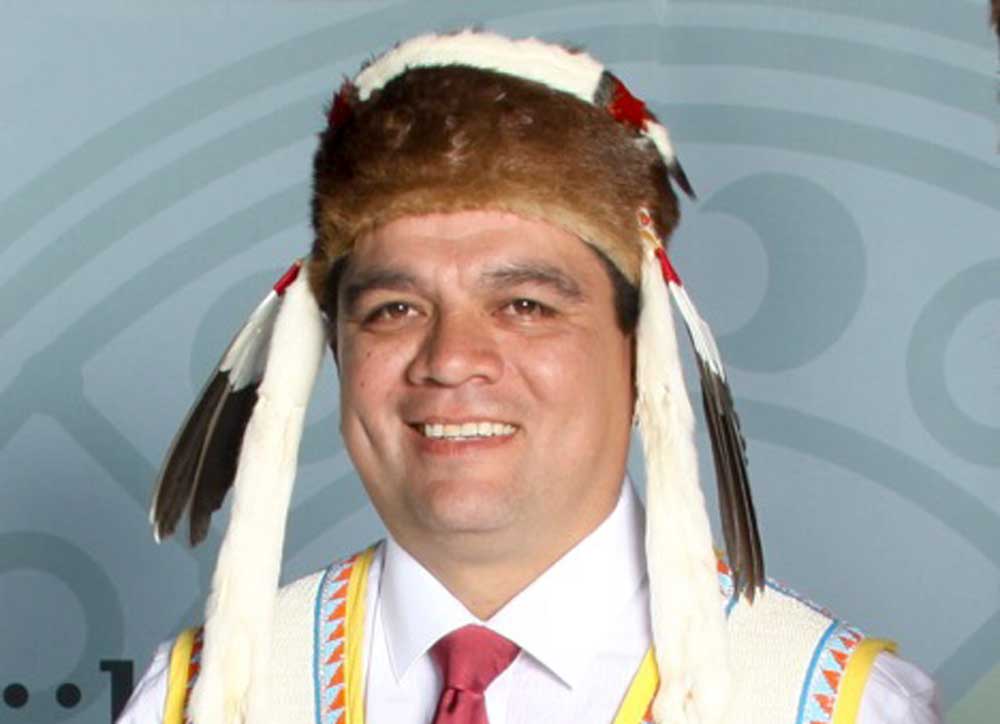WIIKWEMKOONG – The Anishinabek Nation Children’s Commissioner welcomes changes to Ontario’s child welfare system announced recently.
Commissioner Duke Peltier, ogimaa of Wiikwemkoong Unceded Territory, is pleased about the overhaul of child welfare across Ontario that will change the focus of children’s services from “protection-type services to a prevention focus,” he says, as reported in the Anishinabek News.
The new provincial plan will focus the work of child protective services on strengthening families and communities through prevention, early intervention and seeking more permanent homes for children and youth in care when they cannot stay in their own homes or communities.
“Children and youth in care experience significantly worse outcomes than those in a family setting, such as lower graduation rates, a higher risk of homelessness and more involvement with the justice system,” said Jill Dunlop, associate minister of Children and Women’s Issues. “That is why we are transforming the child welfare system, to ensure more families stay together and children and youth in care have the supports they need to be safe, succeed and thrive as they transition from care to adulthood.”
Ms. Dunlop describes the change as a “fundamental redesign from protection to prevention.” On average, Children’s Aid Societies devote only about eight percent of their budgets to prevention right now, she claims.
The new plan calls for strengthening family well-being through prevention services that keep children safe in family-based settings, improving the quality of residential care provided to children and youth, promoting the development of lifelong supports for youth, with a focus on education and employment opportunities, and focusing on family-based options over group care where appropriate, Ms. Dunlop explains.
“This redesign reveals a holistic vision to work better across government ministries and sectors to support the safety, well-being, and prosperity of children and families across Ontario,” says Dr. Jeff Schiffer, executive director of Native Child and Family Services of Toronto. “I’m particularly heartened by the distinct approach to co-develop services with First Nations, Inuit, Metis and urban Indigenous partners to make this vision a reality and reduce the over representation of Indigenous children in the child welfare system.”
The change is welcome, but overdue, suggests Ogimaa Peltier. He told Anishinabek News, “if this approach had been embarked upon a lot earlier-decades earlier-then I would think many of those who have been uprooted from their homes and removed from their families wouldn’t have to be seeking who they are now. They’re looking for their culture, they’re looking for their language, they’re even looking for, in many cases, their families.”
Members of the Anishinabek Nation have been meeting with provincial officials “for many years now,” Ogimaa Pelter explained, and have finally helped convince the province that “this is a better approach to keep families together and it empowers our community-based workers to intervene earlier with those families that are struggling,” he said. “We know the struggles are inter-generational because of the way the system was developed when children were taken out beginning in the ‘60s.”
The new child welfare strategy was developed with input from youth, families, caregivers, First Nations, Inuit and Metis partners, lawyers, community organizations, frontline workers and child welfare sector leaders, according to Ms. Dunlop. Over 3,500 current and past children in care, parents and workers were consulted, she said at a news conference.
The new strategy will help First Nations take over children’s services for their own people, Ogimaa Peltier believes. “I believe it’s setting the stage for the jurisdictional transfer and the removal of the ministry’s intervention into communities and families.”
The Anishinabek Nation has drafted a Child Well-Being Law and currently 22 Anishinabek First Nations have chosen to enact the law as a step towards taking over child welfare services within their territory.
According to the Indigenous Services Canada website, the federal government passed legislation in 2019, An Act Respecting First Nations, Inuit and Metis Children, Youth and Families, to enable First Nations in developing policies and laws relating to child protection, “based on their particular histories, cultures, and circumstances.” Last month, the federal government signed an historic protocol agreement with the Assembly of First Nations, “to advance the transfer of child and family services to First Nations.”
“As the Anishinabek Nation Children’s Commissioner, I’m very happy to hear the minister is now providing the resources to modernize the current system,” said Ogimaa Peltier. “We understand this is a significant undertaking in undoing the systemic issues that have contributed to this legacy of the child welfare system. I’m looking forward to becoming fully involved in the rewriting of this new chapter for our communities and families that require additional supports to help keep them together. We know children staying with their parents is how they will attain all the benefits that life has to offer,” he told Anishinabek News.





